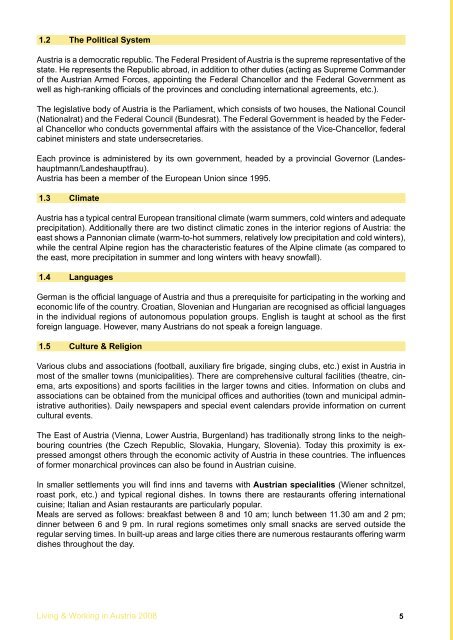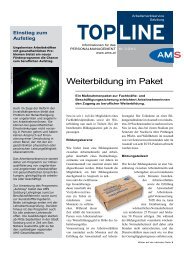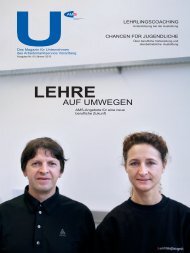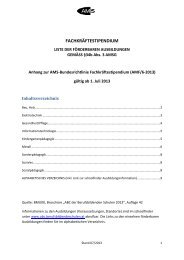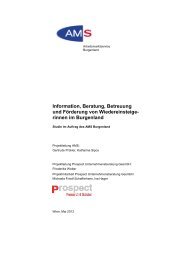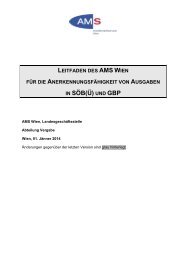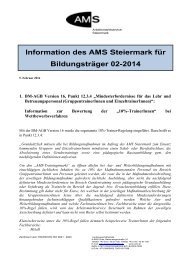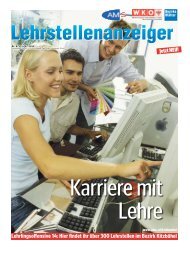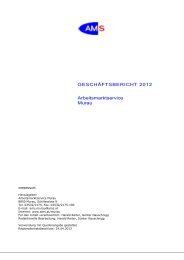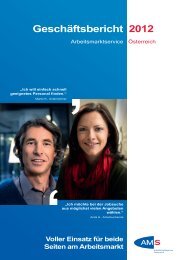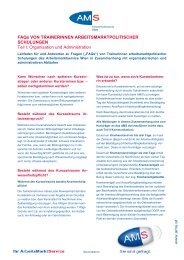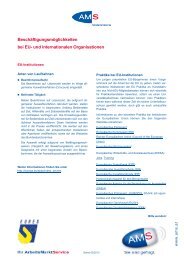Living & Working in Austria Land area - Arbeitsmarktservice Österreich
Living & Working in Austria Land area - Arbeitsmarktservice Österreich
Living & Working in Austria Land area - Arbeitsmarktservice Österreich
You also want an ePaper? Increase the reach of your titles
YUMPU automatically turns print PDFs into web optimized ePapers that Google loves.
1.2 the political system<br />
<strong>Austria</strong> is a democratic republic. The Federal President of <strong>Austria</strong> is the supreme representative of the<br />
state. He represents the Republic abroad, <strong>in</strong> addition to other duties (act<strong>in</strong>g as Supreme Commander<br />
of the <strong>Austria</strong>n Armed Forces, appo<strong>in</strong>t<strong>in</strong>g the Federal Chancellor and the Federal Government as<br />
well as high-rank<strong>in</strong>g officials of the prov<strong>in</strong>ces and conclud<strong>in</strong>g <strong>in</strong>ternational agreements, etc.).<br />
The legislative body of <strong>Austria</strong> is the Parliament, which consists of two houses, the National Council<br />
(Nationalrat) and the Federal Council (Bundesrat). The Federal Government is headed by the Federal<br />
Chancellor who conducts governmental affairs with the assistance of the Vice-Chancellor, federal<br />
cab<strong>in</strong>et m<strong>in</strong>isters and state undersecretaries.<br />
Each prov<strong>in</strong>ce is adm<strong>in</strong>istered by its own government, headed by a prov<strong>in</strong>cial Governor (<strong>Land</strong>eshauptmann/<strong>Land</strong>eshauptfrau).<br />
<strong>Austria</strong> has been a member of the European Union s<strong>in</strong>ce 1995.<br />
1.3 Climate<br />
<strong>Austria</strong> has a typical central European transitional climate (warm summers, cold w<strong>in</strong>ters and adequate<br />
precipitation). Additionally there are two dist<strong>in</strong>ct climatic zones <strong>in</strong> the <strong>in</strong>terior regions of <strong>Austria</strong>: the<br />
east shows a Pannonian climate (warm-to-hot summers, relatively low precipitation and cold w<strong>in</strong>ters),<br />
while the central Alp<strong>in</strong>e region has the characteristic features of the Alp<strong>in</strong>e climate (as compared to<br />
the east, more precipitation <strong>in</strong> summer and long w<strong>in</strong>ters with heavy snowfall).<br />
1.4 languages<br />
German is the official language of <strong>Austria</strong> and thus a prerequisite for participat<strong>in</strong>g <strong>in</strong> the work<strong>in</strong>g and<br />
economic life of the country. Croatian, Slovenian and Hungarian are recognised as official languages<br />
<strong>in</strong> the <strong>in</strong>dividual regions of autonomous population groups. English is taught at school as the first<br />
foreign language. However, many <strong>Austria</strong>ns do not speak a foreign language.<br />
1.5 Culture & religion<br />
Various clubs and associations (football, auxiliary fire brigade, s<strong>in</strong>g<strong>in</strong>g clubs, etc.) exist <strong>in</strong> <strong>Austria</strong> <strong>in</strong><br />
most of the smaller towns (municipalities). There are comprehensive cultural facilities (theatre, c<strong>in</strong>ema,<br />
arts expositions) and sports facilities <strong>in</strong> the larger towns and cities. Information on clubs and<br />
associations can be obta<strong>in</strong>ed from the municipal offices and authorities (town and municipal adm<strong>in</strong>istrative<br />
authorities). Daily newspapers and special event calendars provide <strong>in</strong>formation on current<br />
cultural events.<br />
The East of <strong>Austria</strong> (Vienna, Lower <strong>Austria</strong>, Burgenland) has traditionally strong l<strong>in</strong>ks to the neighbour<strong>in</strong>g<br />
countries (the Czech Republic, Slovakia, Hungary, Slovenia). Today this proximity is expressed<br />
amongst others through the economic activity of <strong>Austria</strong> <strong>in</strong> these countries. The <strong>in</strong>fluences<br />
of former monarchical prov<strong>in</strong>ces can also be found <strong>in</strong> <strong>Austria</strong>n cuis<strong>in</strong>e.<br />
In smaller settlements you will f<strong>in</strong>d <strong>in</strong>ns and taverns with austrian specialities (Wiener schnitzel,<br />
roast pork, etc.) and typical regional dishes. In towns there are restaurants offer<strong>in</strong>g <strong>in</strong>ternational<br />
cuis<strong>in</strong>e; Italian and Asian restaurants are particularly popular.<br />
Meals are served as follows: breakfast between 8 and 10 am; lunch between 11.30 am and 2 pm;<br />
d<strong>in</strong>ner between 6 and 9 pm. In rural regions sometimes only small snacks are served outside the<br />
regular serv<strong>in</strong>g times. In built-up <strong>area</strong>s and large cities there are numerous restaurants offer<strong>in</strong>g warm<br />
dishes throughout the day.<br />
<strong>Liv<strong>in</strong>g</strong> & <strong>Work<strong>in</strong>g</strong> <strong>in</strong> <strong>Austria</strong> 2008<br />
5


